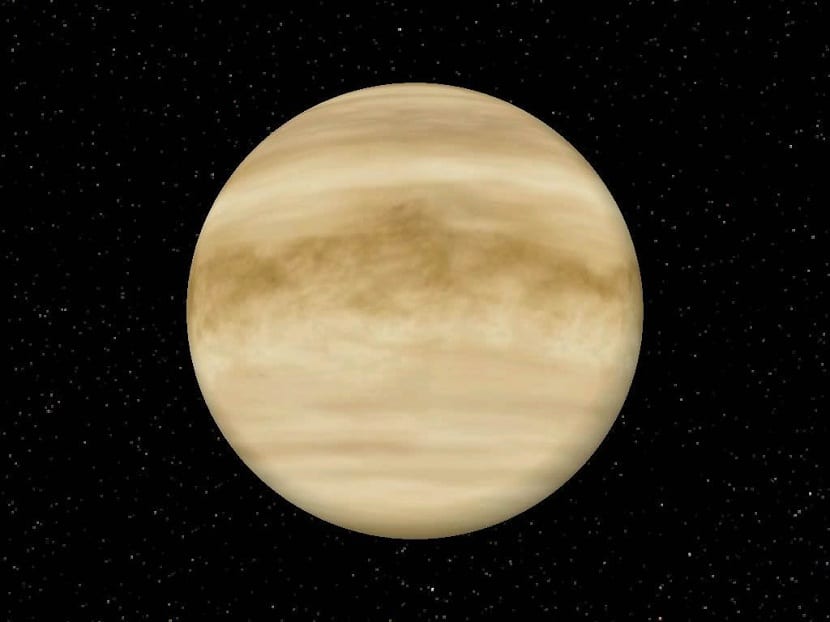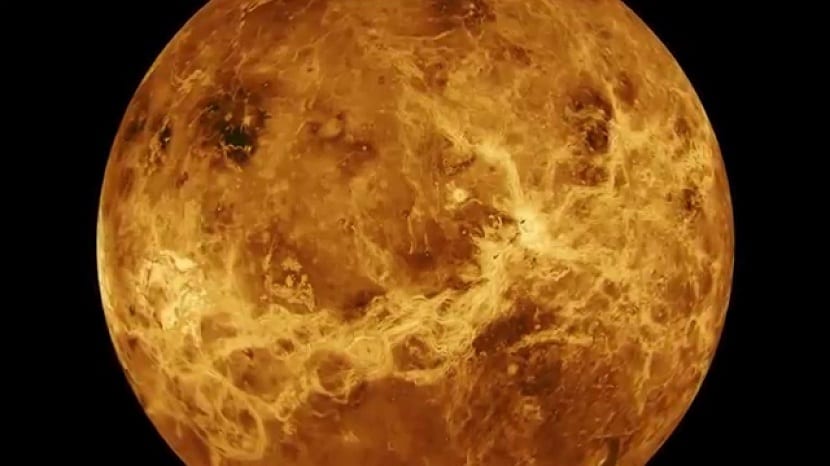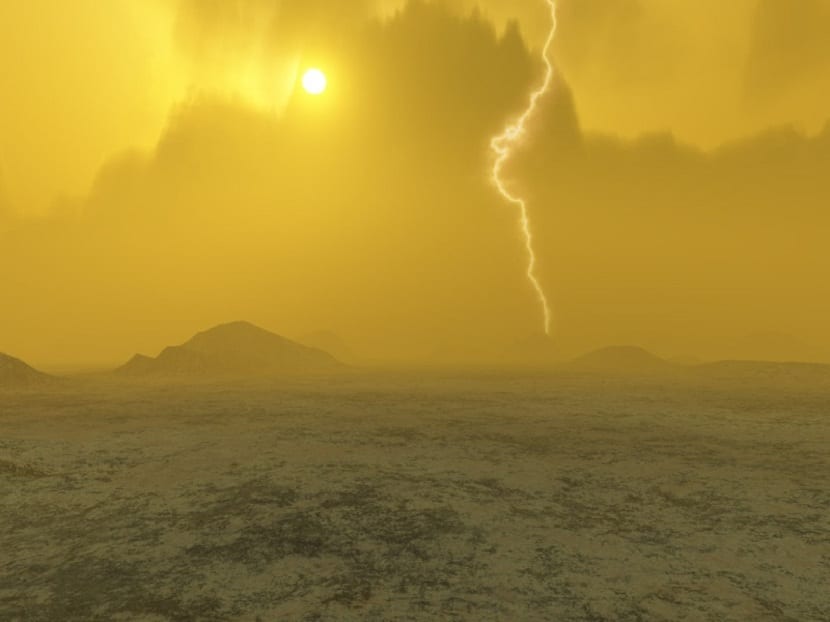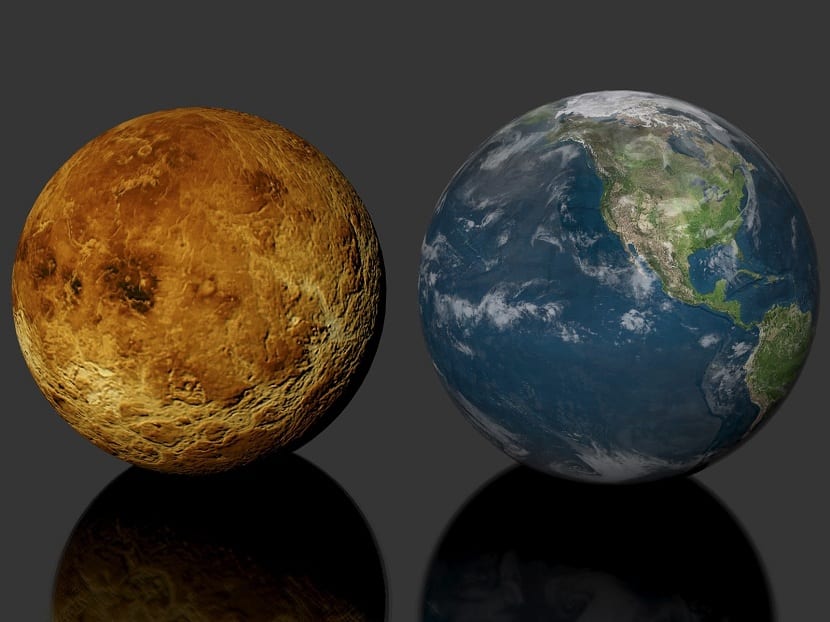
The planet Venus is the second planet from the Sun in our Solar system. It can be seen from Earth as the brightest object in the sky, after the Sun and the Moon. This planet is known by the name of the morning star when it appears in the east at sunrise and the evening star when it is placed in the west at sunset. In this article we will focus on all the characteristics of Venus and its atmosphere so that you can learn more about the planets in our Solar System.
Do you want to know everything about Venus? Keep reading 🙂
Observing the planet Venus

In ancient times, the evening star was known as Hesperus and the morning star as Phosphorus or Lucifer. This is due to the distances between the orbits of Venus and Earth from the Sun. Due to the great distances, Venus it is not visible more than three hours before sunrise or three hours after sunset. Early astronomers thought that Venus could actually be two totally separate bodies.
If viewed through a telescope, the planet has phases like the Moon. When Venus is in its full phase it can be seen smaller since it is on the side farthest from the Sun from Earth. The maximum brightness level is reached when it is in the rising phase.
The phases and positions of Venus in the sky are repeated in a synodic period of 1,6 years. Astronomers refer to this planet as Earth's sister planet. This is because they are very similar in size, as are mass, density, and volume. Both have formed around the same time and condensed from the same nebula. All this makes Earth and Venus are very similar planets.
It is thought that, if it could be at the same distance from the Sun, Venus could host life just like Earth. Being in another area of the Solar System, it has become a very different planet from ours.
Key features

Venus is a planet that has no oceans and is surrounded by a very heavy atmosphere made up mostly of carbon dioxide and almost no water vapor. The clouds are composed of sulfuric acid. On the surface we meet an atmospheric pressure 92 times higher than on our planet. This means that a normal person could not last a minute on the surface of this planet.
It is also known as the scorching planet, since the surface has a temperature of 482 degrees. These temperatures are caused by the great greenhouse effect produced by the dense and heavy atmosphere. If a greenhouse effect is achieved on our planet to retain heat with the much thinner atmosphere, imagine the heat retention effect that a heavier atmosphere will have. All gases are trapped by the atmosphere and are not able to reach space. This causes Venus to be hotter than the planet mercury even though it is closer to the Sun.
A day in Venusian has 243 Earth days and is longer than its 225-day year. This is because Venus rotates in a strange way. It does so from east to west, in the opposite direction to the planets. For a person living on this planet, he could see how the Sun would rise in the west and the sunset would take place in the east.
Atmosphere

The entire planet is covered in clouds and has a dense atmosphere. The high temperature makes studies from Earth difficult. Almost all the knowledge that is had about Venus has been obtained by means of space vehicles that have been able to descend through that dense atmosphere carrying probes. Since 2013 46 missions have been conducted to the scorching planet to be able to discover more about him.
The atmosphere is made up almost entirely of carbon dioxide. This gas is a powerful greenhouse gas due to its ability to retain heat. Therefore, the gases in the atmosphere are unable to migrate into space and release the accumulated heat. The cloud base is 50 km from the surface and the particles in these clouds are mostly concentrated sulfuric acid. The planet has no perceptible magnetic field.
That almost 97% of the atmosphere is made up of CO2 is not so strange. And it is that its earth's crust has the same amount but in the form of limestone. Only 3% of the atmosphere is nitrogen. Water and water vapor are very rare elements on Venus. Many scientists use the argument that, being closer to the Sun, it is subject to too strong a greenhouse effect that leads to the evaporation of the oceans. Hydrogen atoms in water molecules could have been lost in space and oxygen atoms in the crust.
Another possibility that is thought is that Venus had very little water from the beginning of its formation.
Clouds and their composition

The sulfuric acid found in clouds also corresponds to that on Earth. It is capable of forming very fine fogs in the stratosphere. Acid falls in rain and reacts with surface materials. This on our planet is called acid rain and is the cause of numerous damage to natural environments such as forests.
On Venus, the acid evaporates at the base of the clouds and does not precipitate, but stays in the atmosphere. The top of clouds is visible from Earth and from Pioneer Venus 1. You can see how it spreads like a haze 70 or 80 kilometers above the planet's surface. Clouds contain pale yellow impurities and are best detected at wavelengths close to ultraviolet.
The variations that exist in the sulfur dioxide content in the atmosphere could indicate some type of active volcanism on the planet. In areas where there is a higher concentration, there may be an active volcano.
I hope that with this information you can learn more about another planet in the Solar System.